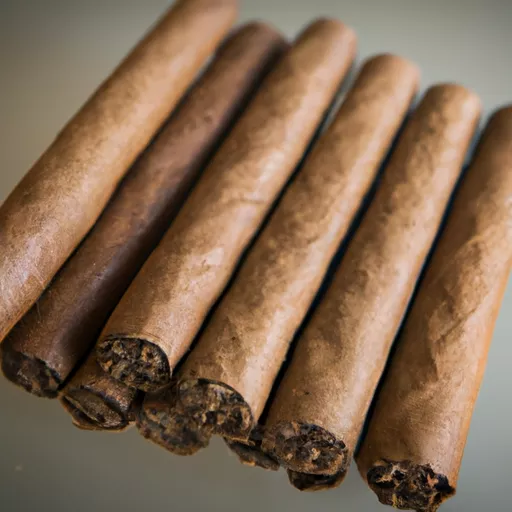
As a cigar lover, I have always been intrigued by the beauty and complexity of traditional cigars. The rich aroma, the smooth draw, and the luxurious feeling of holding a cigar in my hand has always been a part of my relaxation ritual. However, in recent years, a new trend has emerged in the cigar world – little cigars. These miniature versions of traditional cigars have gained popularity among both seasoned smokers and newcomers to the cigar scene. In this article, I will delve into the world of little cigars, exploring what makes them unique, their history, and their appeal to cigar enthusiasts.
Little cigars, also known as cigarillos, are essentially smaller versions of traditional cigars. They usually measure about 3 to 4 inches in length, with a ring gauge (diameter) of around 20 to 30. This is significantly smaller than the average cigar, which is about 6 inches in length with a ring gauge of 50 or more. They are also thinner and lighter, making them a convenient option for a quick smoke break. Little cigars are made with the same tobacco and wrapper leaves as traditional cigars, but they are rolled with a homogenized tobacco leaf that resembles cigarette paper. Unlike traditional cigars, which are intended to be smoked leisurely, little cigars are meant to be smoked quickly, similar to cigarettes.
The history of little cigars dates back to the 19th century when they were first introduced in Europe. In the United States, however, they gained popularity in the mid-20th century when manufacturers started producing them as a cheaper alternative to cigarettes. This was due to the lower taxes on cigars as compared to cigarettes. Little cigars were marketed as “cigars for people who don’t have time to smoke cigars” and were often sold in packs of 10 or 20, just like cigarettes. However, as the cigar industry evolved and prices of traditional cigars increased, little cigars became more than just a cheap substitute – they became a unique product in their own right.
One of the main appeals of little cigars is their affordability. They are significantly cheaper than traditional cigars, making them accessible to a wider range of smokers. This is especially appealing to younger smokers who may not have the budget for more expensive cigars. Little cigars also come in a variety of flavors, from fruity to sweet, which can be enticing to those who are not fond of the natural taste of traditional cigars. These flavors are achieved by infusing the homogenized tobacco leaf with different flavors, creating a more palatable smoke.
Another interesting aspect of little cigars is their packaging. Unlike traditional cigars that are sold in elegant boxes, little cigars are often sold in foil-wrapped packs or in plastic tubes. These packs are more discreet and convenient to carry, making them a popular choice for on-the-go smokers. The absence of elaborate packaging also keeps the cost of little cigars low, making them even more attractive to budget-conscious smokers.
One major misconception about little cigars is that they are not as high-quality as traditional cigars. While it’s true that they are made with a homogenized tobacco leaf, many little cigar manufacturers use the same high-quality tobacco leaves used in traditional cigars. In fact, some premium cigar brands also produce little cigars as a way to introduce their brand to a wider audience. This is a win-win situation for both the manufacturer and the consumer as it allows for a more affordable way to try out different cigar blends and flavors.
While little cigars may have a different appearance and size than traditional cigars, they still require the same techniques and skills to smoke properly. Similar to traditional cigars, little cigars need to be cut before smoking in order to achieve a smooth and even draw. Additionally, the same etiquette should be observed when smoking little cigars, like not inhaling the smoke, slowly puffing, and properly disposing of the cigar when finished. This is something that many new little cigar smokers may not be aware of, thinking that they can be treated like cigarettes.
As a cigar aficionado, I have tried my fair share of little cigars and have been pleasantly surprised by their versatility and flavor profiles. While I still enjoy a traditional cigar on special occasions, little cigars have become my go-to choice for a quick smoke break. Their convenience, affordability, and diverse range of flavors make them a great option for both occasional and daily smokers.
In conclusion, little cigars may be smaller in size, but they pack a lot of punch in terms of flavor and accessibility. As the cigar industry continues to evolve, little cigars are becoming a staple for both traditional and modern cigar enthusiasts. Whether you are a seasoned smoker or a newcomer to the cigar world, I highly recommend giving little cigars a try and exploring the various flavors and blends available. Who knows, it may just become your new favorite way to enjoy a cigar.